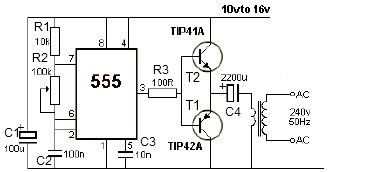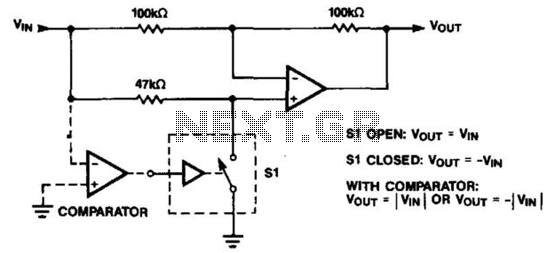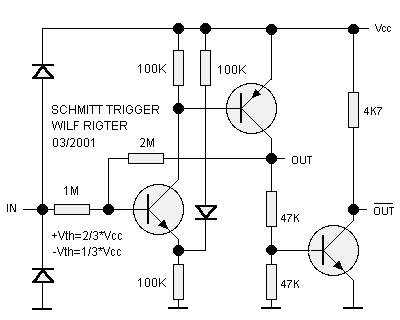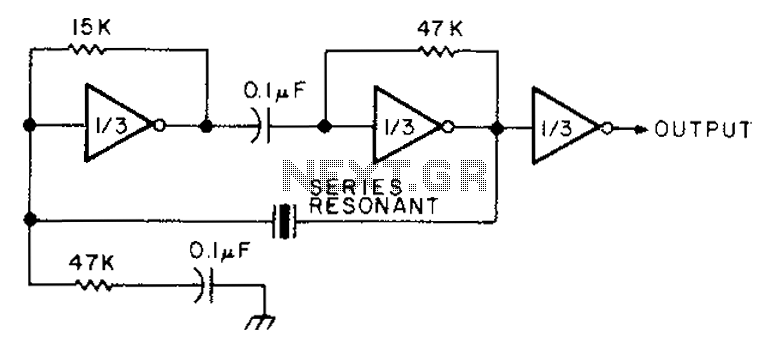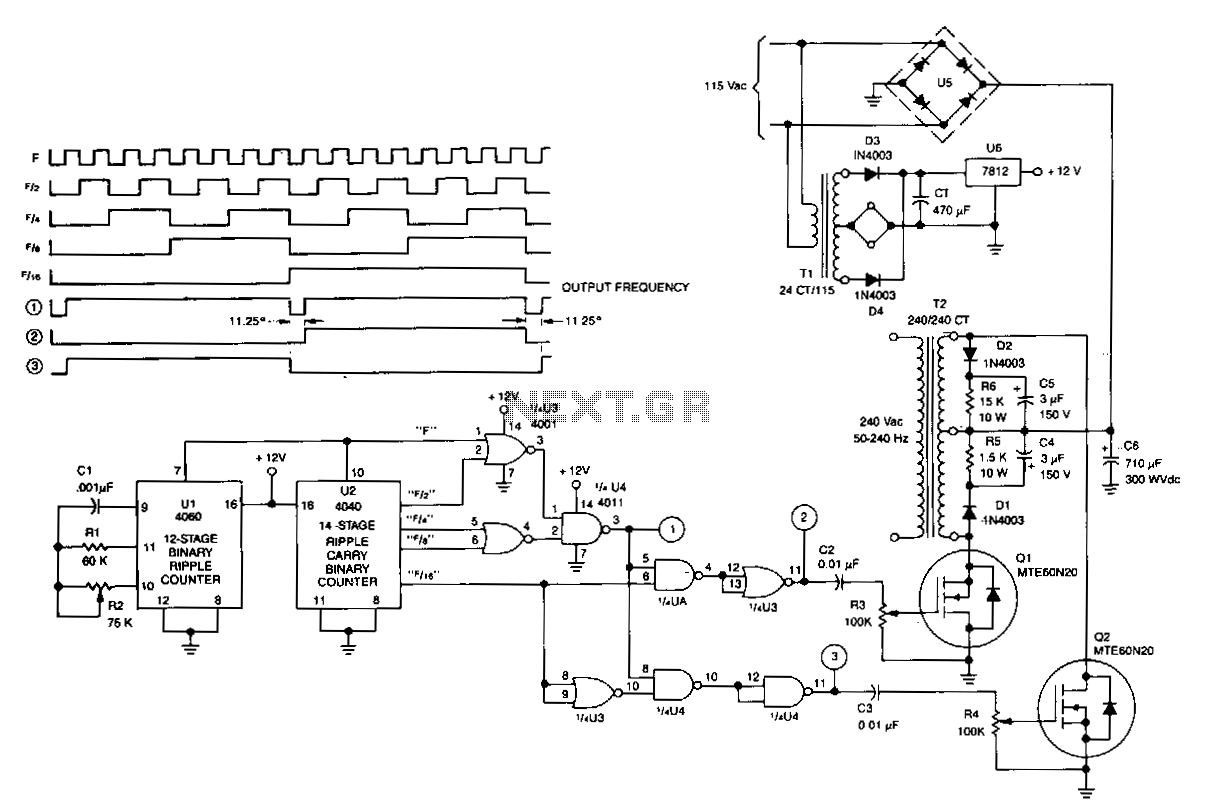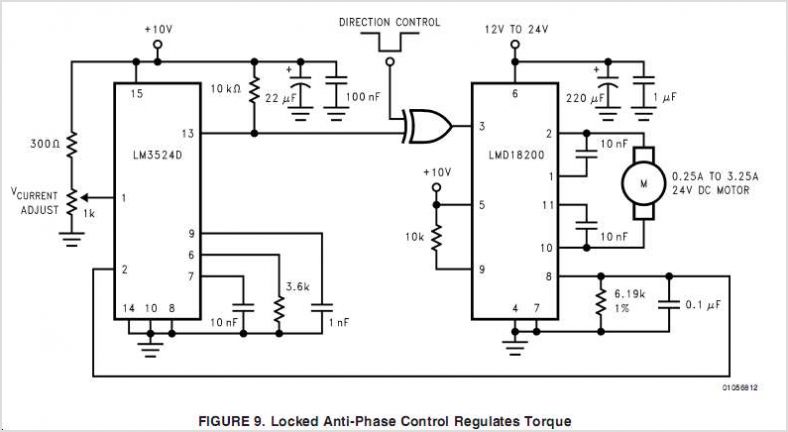
DC to AC inverter H-Bridge
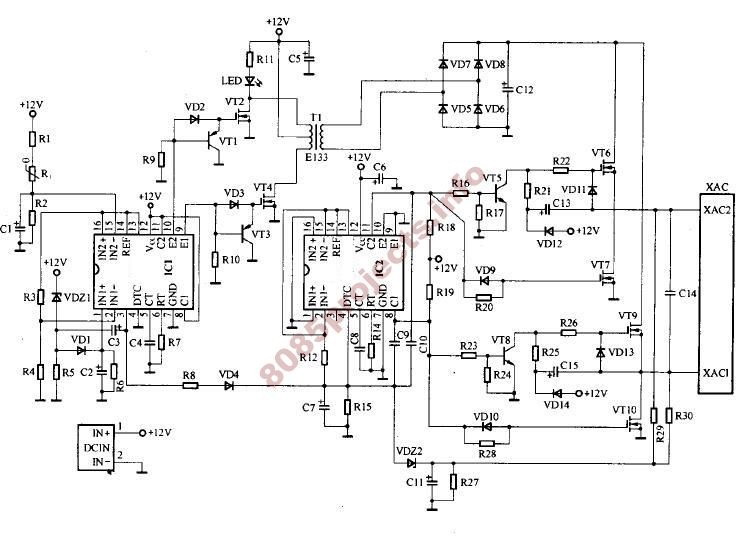
A schematic for an H-bridge circuit is required to convert a 350V DC input into a 230V AC output at a frequency of 50Hz. The design should utilize a 555 timer integrated circuit (IC) along with MOSFETs.
An H-bridge is a circuit configuration that allows for the control of the polarity of a voltage applied to a load, enabling it to drive a motor or other devices in both forward and reverse directions. In this case, the H-bridge will be used to generate an alternating current (AC) output from a direct current (DC) source.
The core components of the circuit include four MOSFETs arranged in an H-bridge configuration. The MOSFETs will be responsible for switching the high-voltage DC to create a square wave output. The 555 timer IC will serve as an astable multivibrator, generating a pulse-width modulation (PWM) signal to control the gates of the MOSFETs. This PWM signal will dictate the timing and duration of the switching, effectively simulating an AC waveform.
To achieve the desired output voltage of 230V AC, the circuit must be designed to handle the high voltage and ensure safe operation. This may involve using appropriate gate driver circuits to ensure the MOSFETs switch efficiently and safely at the required frequency. Additionally, the circuit may require snubber circuits or flyback diodes to protect against voltage spikes caused by the inductive loads.
The output of the H-bridge can be further processed using a transformer to step down the voltage if necessary and to filter the waveform to produce a more sinusoidal output. Careful consideration must also be given to the thermal management of the MOSFETs, as they will dissipate heat during operation, potentially requiring heat sinks or active cooling solutions.
Overall, the design of this H-bridge circuit requires careful attention to component selection, circuit layout, and safety measures to ensure reliable operation in converting 350V DC to 230V AC at 50Hz.Hi everybody. I need H-bridge schematic for 230V 50Hz output from DC 350V, using 555 timer IC and mosfets.. 🔗 External reference
An H-bridge is a circuit configuration that allows for the control of the polarity of a voltage applied to a load, enabling it to drive a motor or other devices in both forward and reverse directions. In this case, the H-bridge will be used to generate an alternating current (AC) output from a direct current (DC) source.
The core components of the circuit include four MOSFETs arranged in an H-bridge configuration. The MOSFETs will be responsible for switching the high-voltage DC to create a square wave output. The 555 timer IC will serve as an astable multivibrator, generating a pulse-width modulation (PWM) signal to control the gates of the MOSFETs. This PWM signal will dictate the timing and duration of the switching, effectively simulating an AC waveform.
To achieve the desired output voltage of 230V AC, the circuit must be designed to handle the high voltage and ensure safe operation. This may involve using appropriate gate driver circuits to ensure the MOSFETs switch efficiently and safely at the required frequency. Additionally, the circuit may require snubber circuits or flyback diodes to protect against voltage spikes caused by the inductive loads.
The output of the H-bridge can be further processed using a transformer to step down the voltage if necessary and to filter the waveform to produce a more sinusoidal output. Careful consideration must also be given to the thermal management of the MOSFETs, as they will dissipate heat during operation, potentially requiring heat sinks or active cooling solutions.
Overall, the design of this H-bridge circuit requires careful attention to component selection, circuit layout, and safety measures to ensure reliable operation in converting 350V DC to 230V AC at 50Hz.Hi everybody. I need H-bridge schematic for 230V 50Hz output from DC 350V, using 555 timer IC and mosfets.. 🔗 External reference
